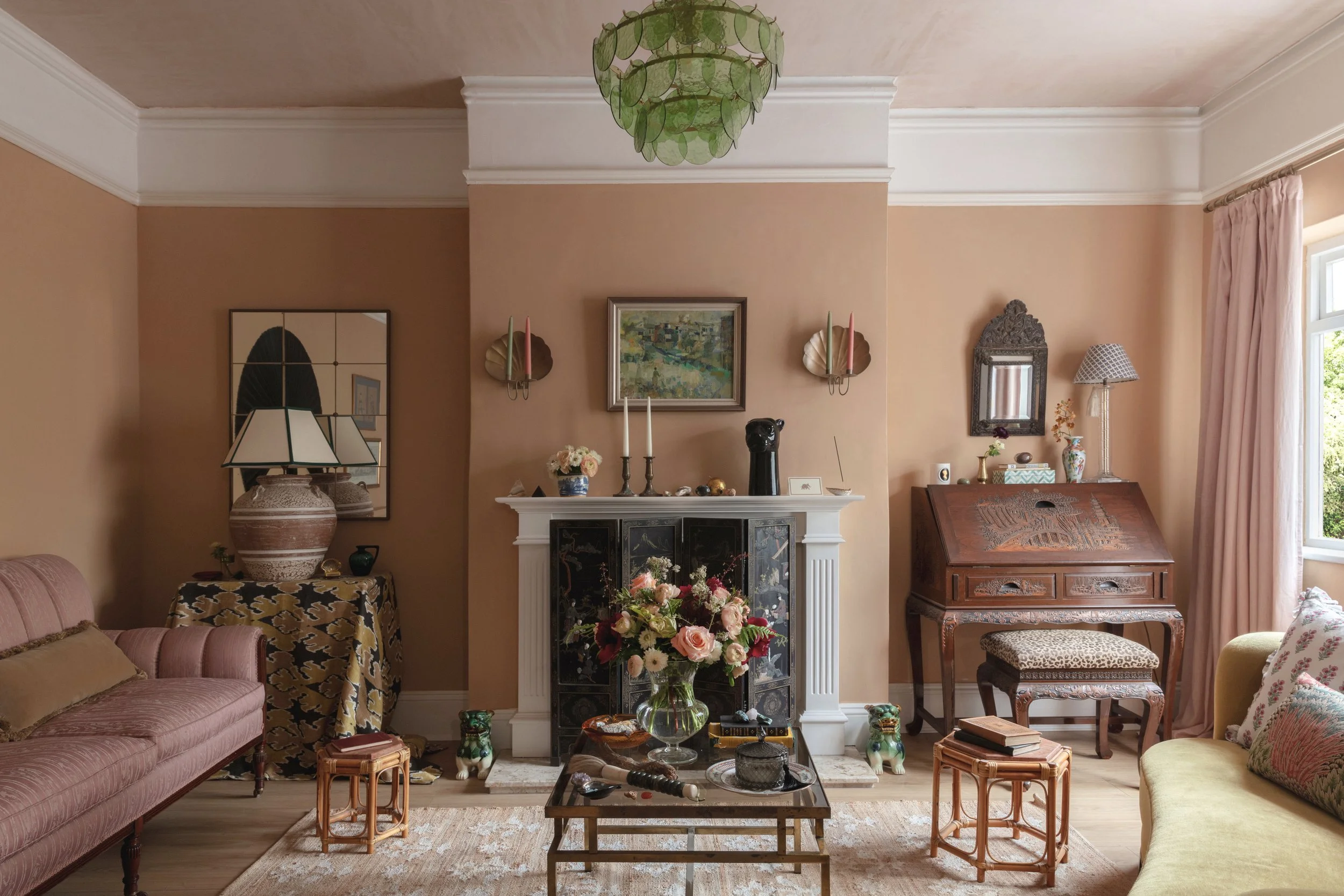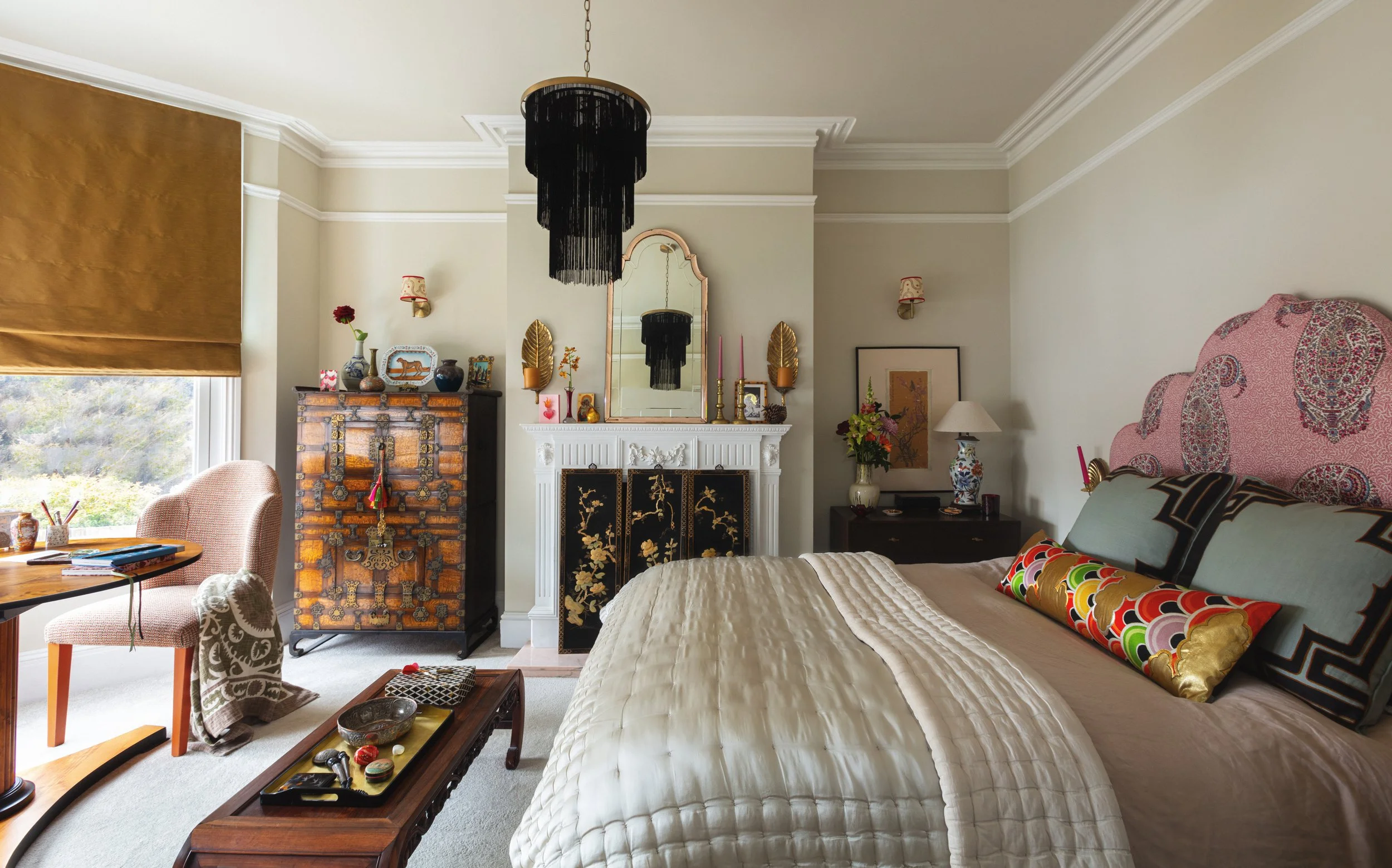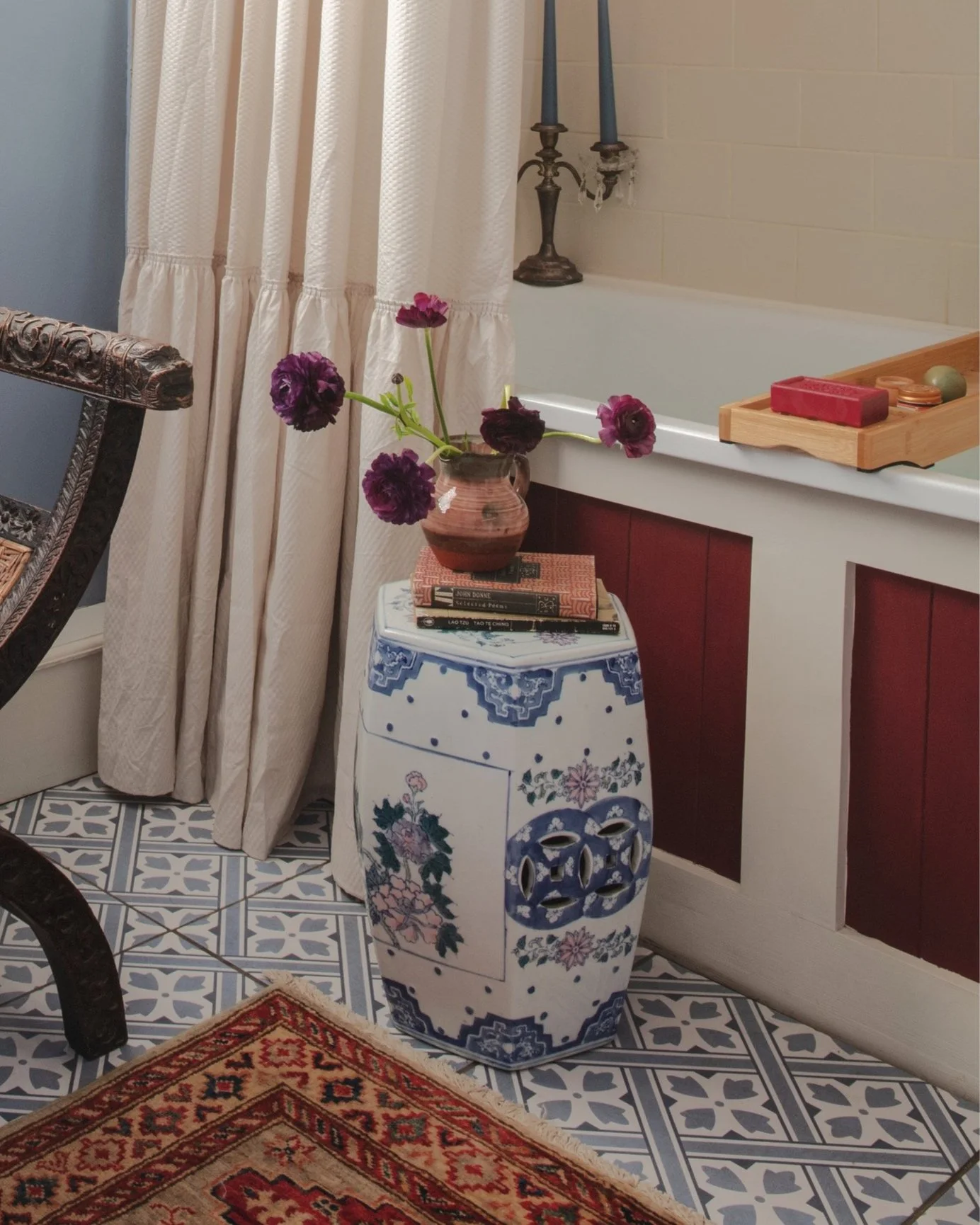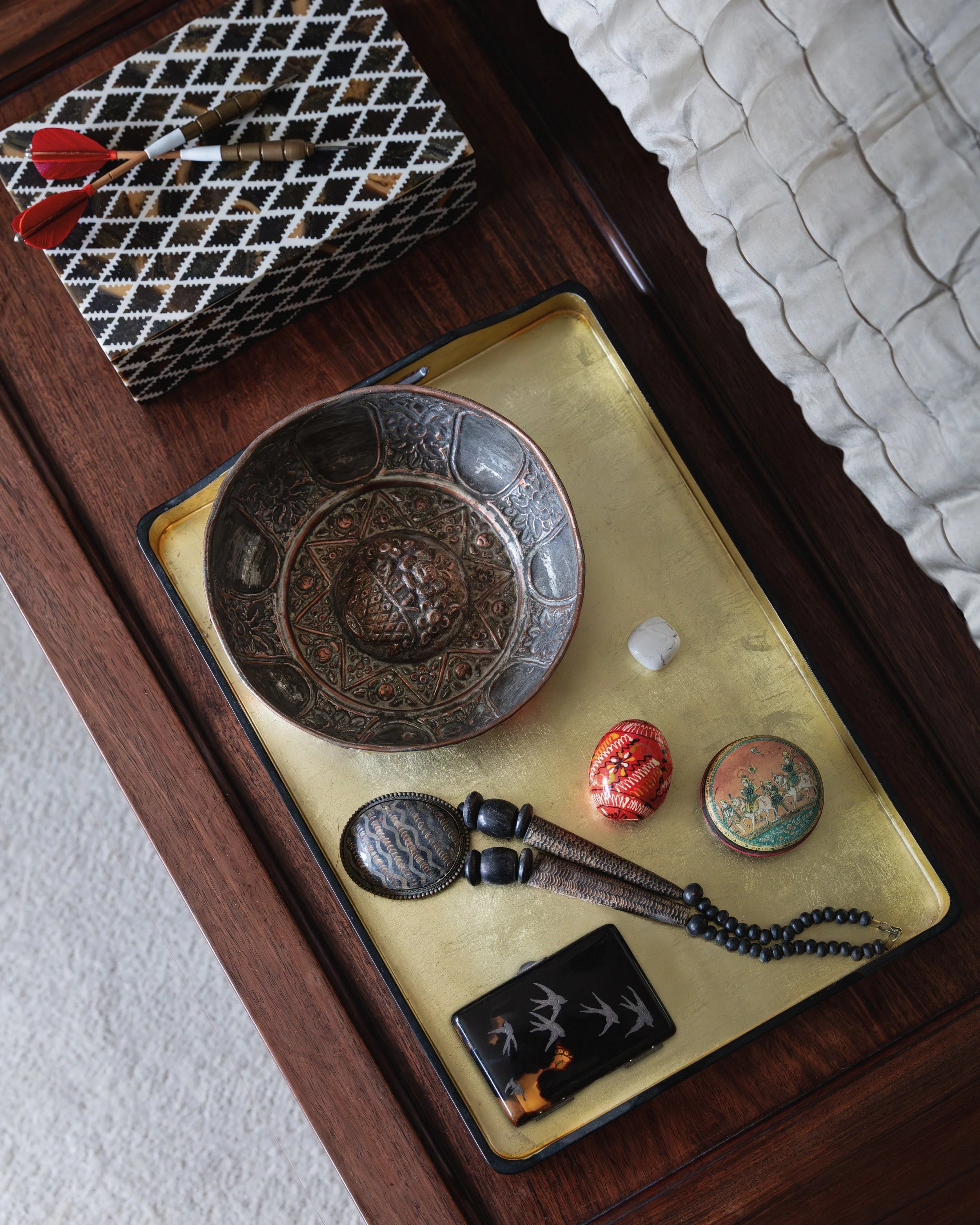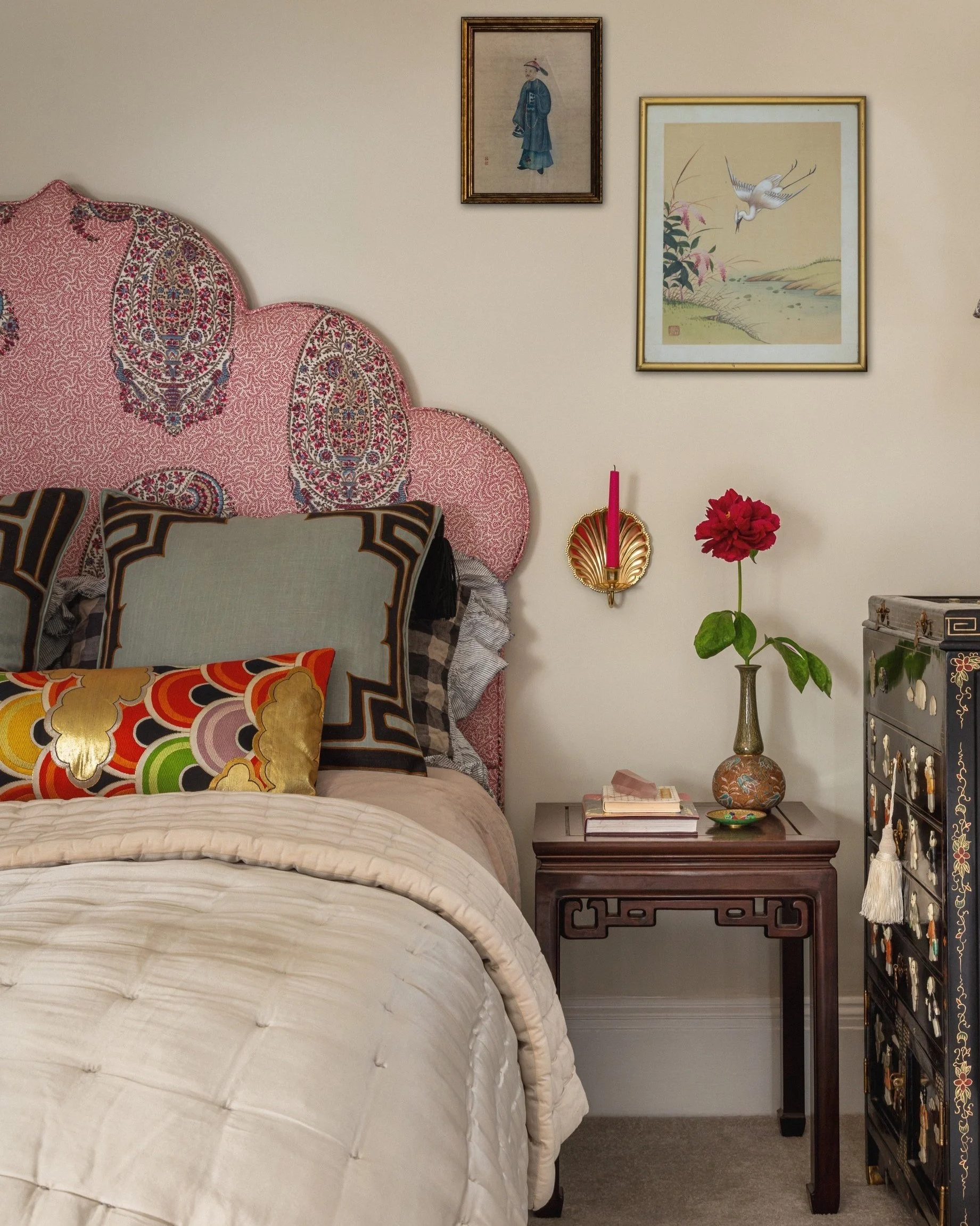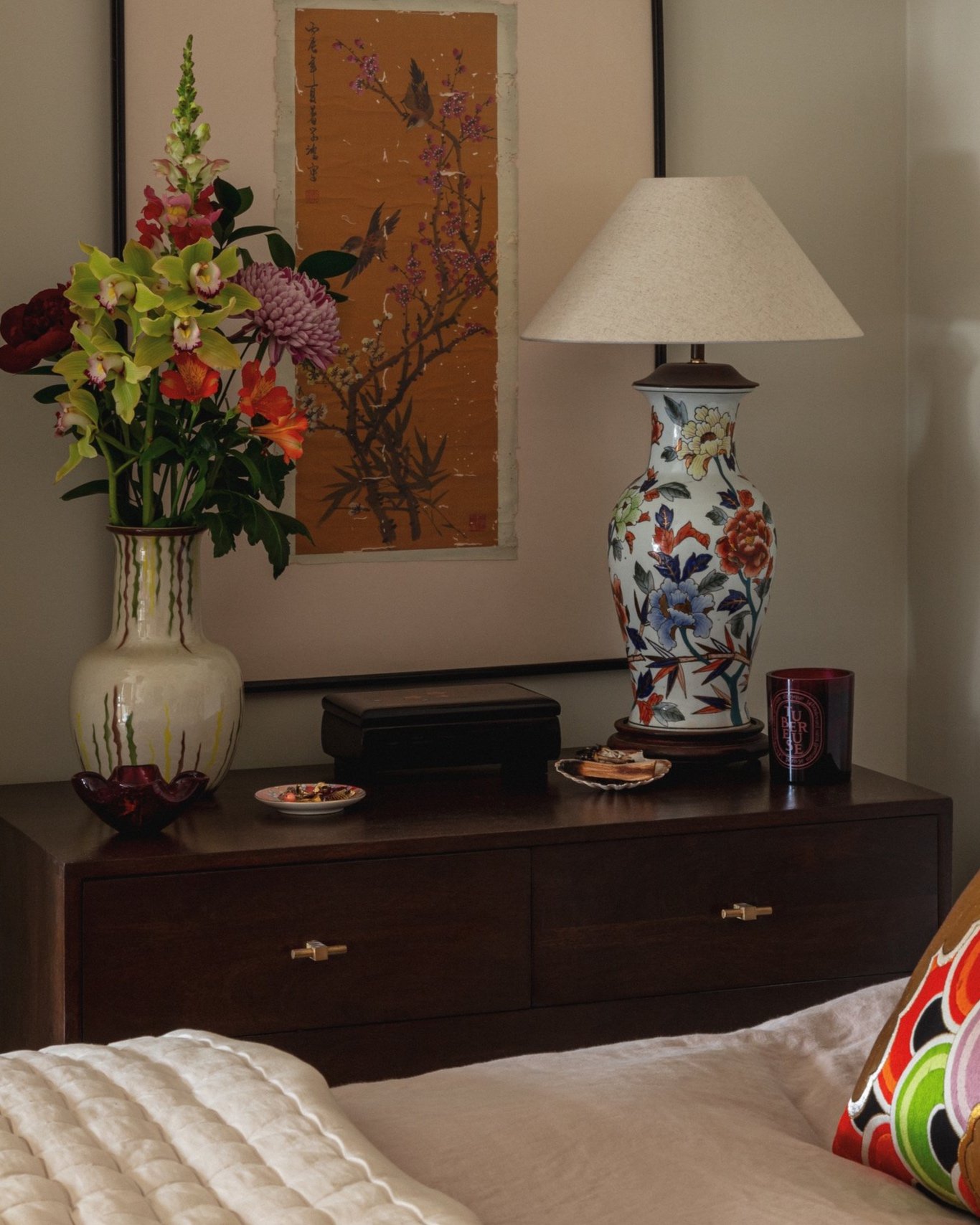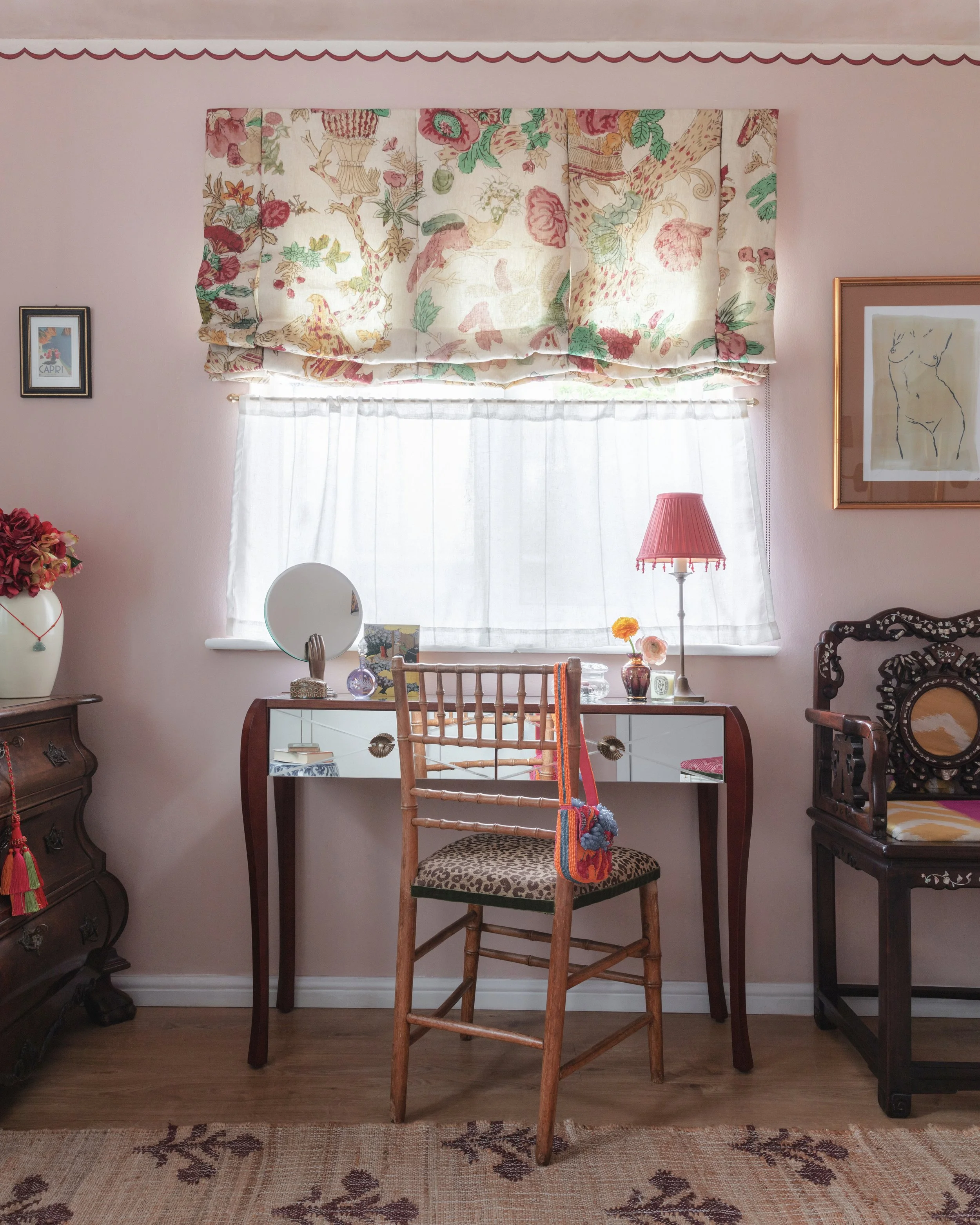Mastering the Art of Mixing Patterns and Prints in Interior Design
Mixing patterns and prints might be second nature to most designers but it can feel daunting to many so to help shed some of the mystique that shrouds it I’ve broken down the process and key concepts for those who are keen to experiment with incorporating pattern and print in their own homes but aren’t sure where to start.
Identify your preferred pattern styles
Before diving into patterns and prints, it's essential to establish the kind of patterns you’re drawn too. Patterns broadly fall into the types outlined below:
· Stripes & checks
· Animal prints
· Geometrics
· Botanicals
· Florals
· Tribals
· Abstracts
Once you have a good steer on these preferences you can move onto the next step.
Choose a Colour Palette
Selecting a cohesive colour palette is the next step to mixing patterns successfully. Stick to 2-3 main colours with a background or base shade to ground the scheme. For instance, if you love blues and greens, you can mix these shades with a neutral base like white, beige, or grey. Going one step further you can then add an additional colour to the mix to offset the combination, either with a punchy contrasting colour, or perhaps a tonal colour to meld together the blues and greens. The key is to ensure that all the patterns share at least one or two of the chosen colours to tie everything together.
If you’re especially nervous about clashing colours, opt for tonal schemes which incorporate varying shades of the same colour. This approach offers will add interest in a subtle way and can be layered upon later if your confidence in mixing patterns increased and you fancy experimenting with a bolder look.
Mix Different Scales of Patterns
One of the most important aspects in successfully mixing patterns is to vary the scale of the prints. This means pairing large-scale patterns with medium sized and smaller ones. For example, if you have a large scale botanical wallpaper, balance it with a smaller, more streamlined pattern like a stripe. This variation prevents the patterns from competing and allows each to stand out in its own way.
Large Scale: Think big florals, wide stripes, or oversized geometric shapes. These are primarily used on larger surfaces that make a statement, like an area rug, wall covering, or a large piece of art.
Medium Scale: These can include slightly smaller designs like mid-sized tribal or geometric prints. This scale is typically well suited to medium sized surfaces like larger items of upholstery and window treatments but can also be used to great effect on smaller items like soft furnishings such as cushions and throws.
Small Scale: Think small dots, subtle stripes, or delicate floral patterns. These are great for smaller accessories like lampshades, but can also be fantastic on larger surfaces e.g. a small scale patterned wallpaper layered with medium scale fabrics in the room.
Mix Different Pattern Types
Now that you’ve identified your pattern and colour preferences and have a steer on how to combine different scales the next step is to mix a combination of your favourite types of patterns, e.g. tribals with geometrics, to give your room interest and personality.
As a basic guideline:
Stripes & checks: Classic and versatile, stripes work well with almost any other pattern and can add a touch of order and symmetry.
Florals: These add a soft, organic feel and pair beautifully with more structured patterns like stripes and geometrics.
Geometric Patterns: Modern and bold, geometrics can range from symmetrical art deco and mid-century motifs to the softer, painterly geometrics seen on block print linens.
Animal Prints: For a touch of the exotic, animal prints like leopard or tiger can act as neutrals, bringing texture and a sense sophisticated flamboyance to a space.
Tribals: For those keen to add well-travelled, worldly charm tribal prints are a fantastic way to introduce a sense of diversity and cultural curiosity. There is also an inherent imperfect hand-crafted quality that typically adds a relaxed feel to schemes.
Play with Texture
Texture is another important layer of interest when mixing patterns and prints. A textured material, like a knitted throw, velvet cushion, or rattan basket, adds a tactile element that complements and enhances printed fabrics. Even if the patterns are bold, incorporating texture can ground the design, making the space feel warm and cohesive.
Balance with Solids
Solids act as the “breather” in a room filled with patterns. Incorporating solid-coloured elements, such as a plain sofa or solid drapes, helps to balance the visual intensity.
Layer Patterns Gradually
If you’re new to mixing patterns, start slowly. Begin with one patterned piece, such as a rug or a set of cushions, and then build from there. Gradually layer in additional patterns through smaller accessories until you achieve the desired look. This approach allows you to make adjustments along the way without feeling overwhelmed.
Trust Your Instincts
Ultimately, interior design is an expression of your personal style. While guidelines such as these can hopefully help encourage experimentation, the most important rule is to trust your instincts even if that means breaking from traditional dogma. Similarly to art, it’s important to understand the foundational principles and theories that underpin prescribed approaches in order to gain the confidence to play with and subvert formulaic approaches in favour of more instinctive ones guided by your own innate, if somewhat hidden or unrealised, sense of style.
In short, if a combination feels right to you, go for it! Take risks, experiment, and have fun with the process!












